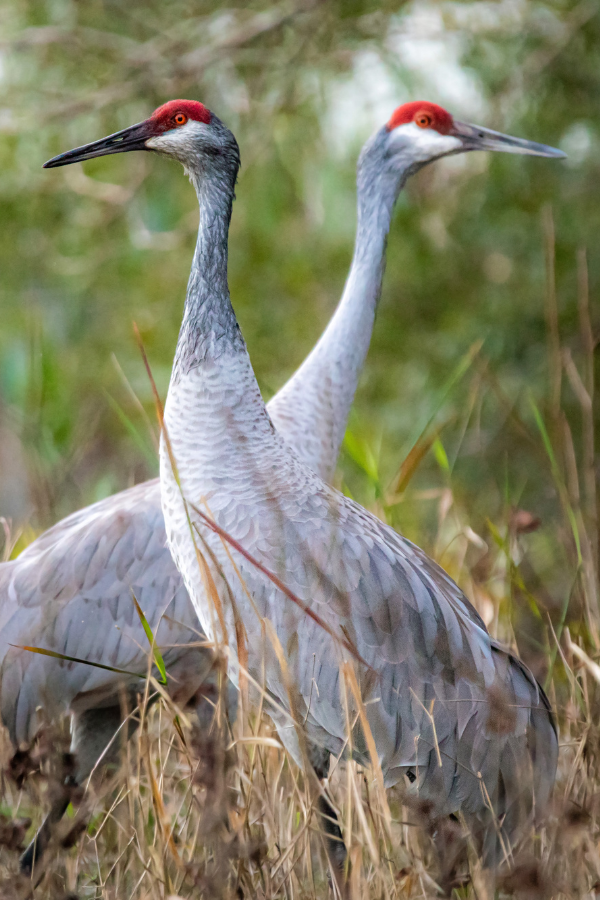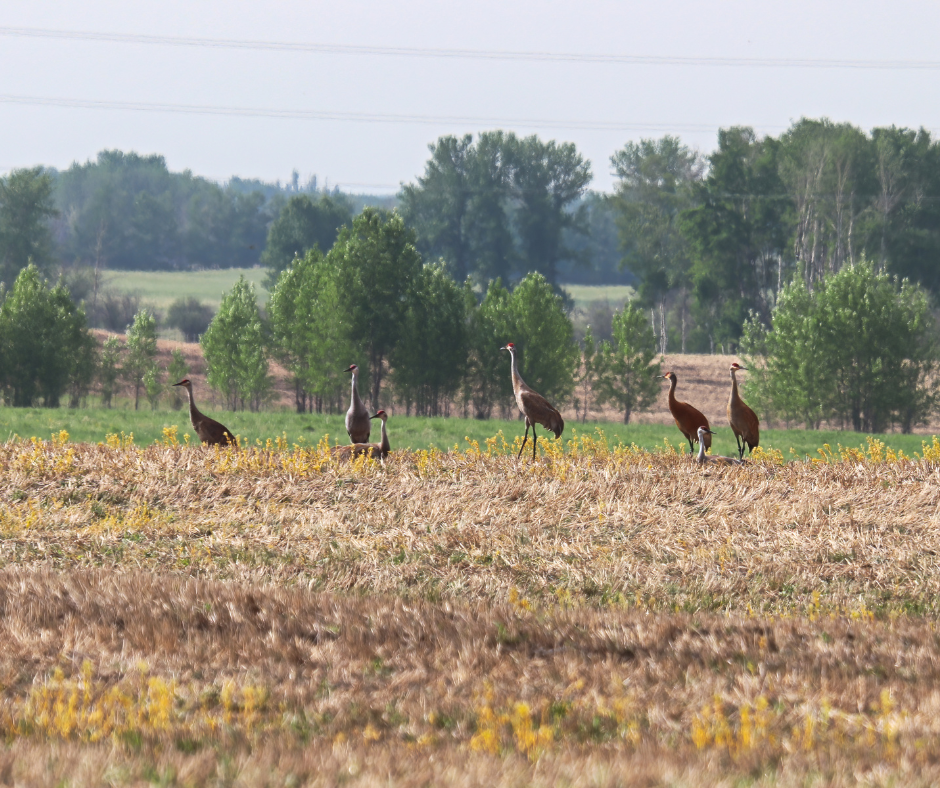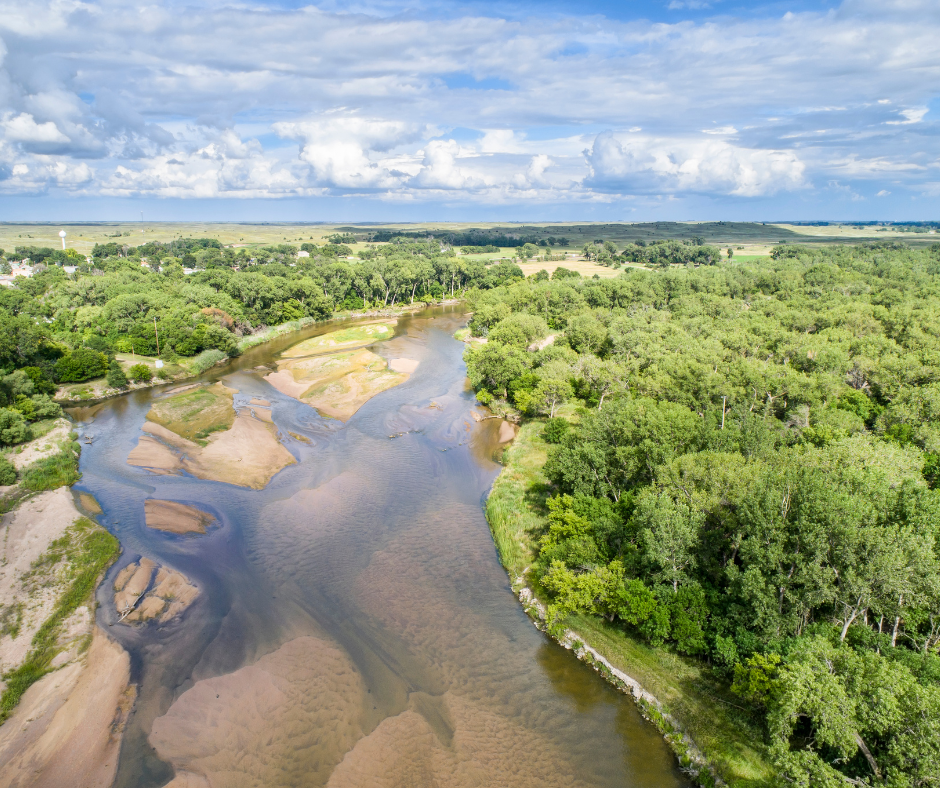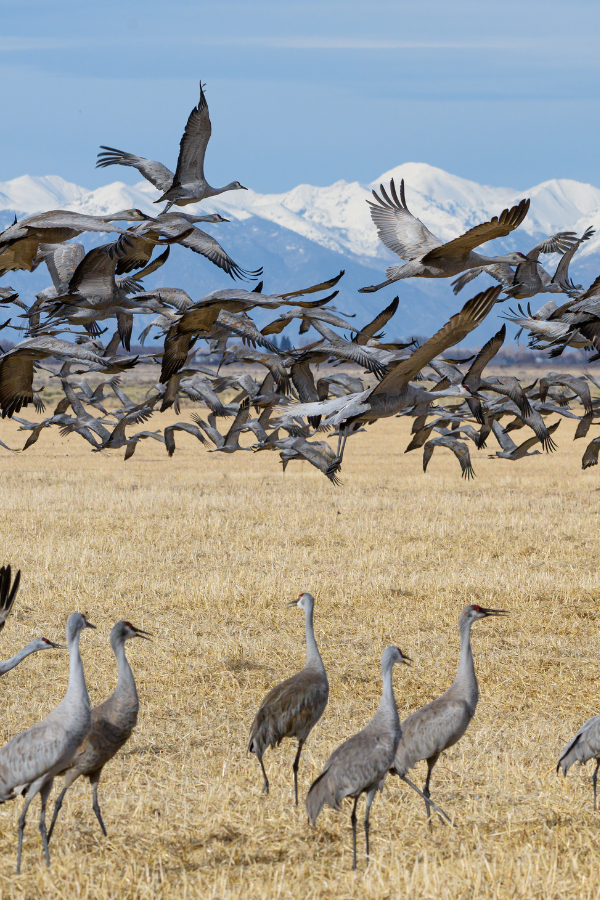

Birder Paradise: Reflecting on Nebraska’s Sandhill Crane Migration
Summary
Reflection Questions
Journal Prompt
Every year, the heartland of America witnesses one of the most spectacular natural events—the migration of hundreds of thousands of sandhill cranes. From late February to early April, these majestic birds converge upon the Platte River in Nebraska, offering a breathtaking display of nature in motion. If observing this magnificent migration is on your bucket list, now is the time to prepare for your journey to the central plains. From the best viewing spots to understanding the patterns of these ancient birds, here’s everything you need to know about this remarkable event.
What Are Sandhill Cranes?


Sandhill cranes are large North American birds, known for their grand size, red foreheads, and captivating courtship dances. Standing up to four feet tall with a wingspan of six to seven feet, these cranes are among the oldest bird species still living today, with fossil records dating back millions of years.
In fact, the oldest Sandhill Crane fossil was found in the Macasphalt Shell Pit, near Sarasota, Florida. This fossil dates back to the Pliocene epoch, making it about 2.5 million years old. This discovery is significant as it confirms that sandhill cranes have existed in North America for millions of years, highlighting their long-standing presence and the evolutionary success of their species. The fossil remains suggest that sandhill cranes have changed very little over the millennia, indicating their adaptations and behaviors have been effective for survival through various geological epochs.
Unlike many birds that migrate in silence, sandhill cranes are celebrated for their loud, trumpeting calls that can be heard from miles away. These calls, combined with their synchronized and graceful dancing, play crucial roles in their mating rituals and social interactions.
Why Do Sandhill Cranes Migrate?


These migratory birds are primarily driven by their search for breeding grounds and favorable weather conditions. The Platte River in Nebraska provides an ideal stopover habitat where these birds can rest and gain the energy needed for the long journey to their northern breeding sites in Canada, Alaska, and Siberia.
Why Did the World’s Sandhill Cranes Choose Nebraska’s Platte River?


Each spring, 80 million cranes stop along the Platte River’s wet meadows during their migration northward from the Southern United States to their breeding grounds in Canada, Alaska, and Siberia. This stopover is essential for the cranes to rest and replenish their energy reserves so they can reach the Sandhill Cranes nesting ground in time for breeding season.
The Platte River offers a unique habitat that is ideally suited to the needs of sandhill cranes during their migration. The river’s broad, shallow waters provide safe roosting sites where cranes can rest at night, protected from predators by the river’s sandbars. During the day, the surrounding fields and meadows offer an abundance of food sources, which are critical for building the energy reserves the cranes need for breeding and completing their migration.
Role of Agricultural Byproducts
A significant aspect of the crane’s diet during this stopover includes the leftover corn kernels from the previous fall’s harvest. These grains, not picked up during the mechanical harvesting process, provide a high-energy food source which is easy for the cranes to access. Feeding on this abundant food source allows the cranes to significantly increase their body weight during the few weeks they spend in Nebraska, which is crucial for their survival and reproductive success in the coming months.
Fuel your creative fire & be a part of a supportive community that values how you love to live.
subscribe to our newsletter
*please check your Spam folder for the latest DesignDash Magazine issue immediately after subscription


Ecological Impact
The consumption of leftover grains also benefits the ecosystem by reducing waste and contributing to the cycle of nutrient recycling in the area. However, the reliance on agricultural fields can also pose risks to cranes, such as exposure to pesticides or conflicts with human activities. Conservation efforts in the region focus on managing these risks while ensuring that the habitat remains conducive to the cranes’ annual visit.
Where Can I Watch This Phenomenal Migration?


The Platte River between Grand Island and Kearney, Nebraska, offers some of the best vantage points for observing tens of thousands of these birds during their annual spring migration. This area, often referred to as the “Crane Capital of the World,” provides various public and private viewing sites, but the best are the Crane Trust Nature & Visitor Center and Rowe Sanctuary.
Rowe Sanctuary
Operated by the Audubon Society, Rowe Sanctuary is a key destination for those seeking an immersive experience with the cranes. The sanctuary’s location is specifically chosen for its broad river channels and shallow sandbars, ideal for the cranes as they roost during the night. Visitors can participate in guided tours that lead to strategically placed blinds, offering up-close views of the cranes as they arrive at dusk or depart at dawn.
These tours not only allow you to experience the overwhelming sight of thousands of cranes filling the sky but also to hear the collective sounds of their calls, creating a truly enveloping sensory experience. The sanctuary also offers special overnight stays in these blinds—a rare opportunity to observe the cranes under the cover of night and the early morning light.
Crane Trust Nature & Visitor Center
Located a bit further west, the Crane Trust Nature & Visitor Center serves as another excellent vantage point. This center is equipped with both indoor and outdoor observation areas, making it suitable for all weather conditions. The outdoor platforms overlook wide stretches of the river, where cranes gather in large numbers, offering spectacular viewing opportunities.
For a more guided experience, the Crane Trust also offers walking tours along its trails, where experts explain the behaviors and habitats of the cranes. Additionally, the center features educational programs and exhibits that delve into the ecological roles of sandhill cranes and the conservation efforts necessary to preserve their migration routes.
Selecting the Right Location Along Nebraska’s Platte River
Both Rowe Sanctuary and the Crane Trust Nature & Visitor Center are dedicated to educating visitors about the importance of habitat conservation and the ecological impact of the sandhill cranes. By visiting these sites, you not only witness one of the most stunning natural events but also contribute to the ongoing efforts to protect and understand these magnificent birds. Furthermore, the staff at both locations are committed to providing educational insights that enhance the visitor experience, offering deeper understanding and appreciation of the cranes’ behaviors, challenges, and the critical role they play in the ecosystem.
As you plan your visit, consider the different perspectives each location offers. Whether you choose the intimate, up-close encounter of an overnight blind stay at Rowe Sanctuary or the broader, more varied experiences at the Crane Trust, your visit to the Platte River during the crane migration is sure to be an unforgettable adventure. Each site offers a unique way to engage with and appreciate the natural wonder of the sandhill crane migration, ensuring that every visitor leaves with a profound respect for these ancient birds and the breathtaking spectacle they provide each spring.
Planning Your Trip to See the Sandhill Cranes


To fully enjoy the sandhill crane migration, it’s essential to plan ahead. Regularly check websites of organizations like the Audubon Society and the Crane Trust for updates on the migration and available tours. Tours and accommodations can fill up quickly due to the popularity of this event. Booking several months in advance is recommended.
Nebraska’s spring weather can be unpredictable. Dress in layers and be prepared for chilly mornings and evenings. Maintain a respectful distance, use quiet voices, and avoid sudden movements to ensure a safe and stress-free environment for both the cranes and other viewers. Do not remove any aquatic plants or introduce any invasive species.
A Call to Conservation: Please Support the Protection of These Amazing Ancient Birds
As you witness the awe-inspiring sight of sandhill cranes filling the skies, consider the vital importance of conservation efforts that maintain these migration routes and habitats. The survival of this ancient migration spectacle depends on the continued preservation of America’s waterways and prairies.
Final Thoughts
As the skies above Nebraska come alive with the calls and dances of sandhill cranes, observers are offered a poignant reminder of nature’s resilience and beauty. Whether you’re an avid birdwatcher, a nature lover, or simply seeking a unique escape, the sandhill crane migration is an unforgettable experience that echoes the rhythms of the natural world. Don’t miss the chance to witness this ancient avian ballet—plan your trip today and be part of a tradition that continues to marvel and inspire.
Design Dash
Join us in designing a life you love.
-
The Friendship Breakup: How to Let Go of Toxic Relationships Gracefully
A friendship breakup can be so much harder than a romantic breakup. Learn how to navigate the grief, set boundaries, and rebuild.
-
Designing a Morning Routine Based on Your Chronotype (And Why It Works)
Learn how to align with your natural energy patterns and transform your mornings by creating a routine tailored to your chronotype.
-
Why ‘Ghosting’ at Work Won’t Work: How to Gracefully Decline Social Invitations
Instead of ghosting at work, learn how to gracefully say no, set boundaries, and maintain professional connections without burning out.
-
The Joy of Missing Out: How to Embrace JOMO and Reclaim Your Time
The Joy of Missing Out (JOMO) can help you reclaim your time! Learn how to prioritize what matters, embrace intentional living, and balance your busy life with actionable tips for both personal and professional well-being.
-
Why Everyone Should Consider Couples Therapy—Even When Things Seem Fine
Strengthen your relationship with couples therapy—even when things seem fine. Therapy can improve communication and deepen connection.
-
End-of-the-Year Reflection Questions Before 2025: What Worked & What Didn’t
Let’s work through end-of-the-year reflection questions—celebrating what worked, recognizing what didn’t, and setting intentions for 2025.








